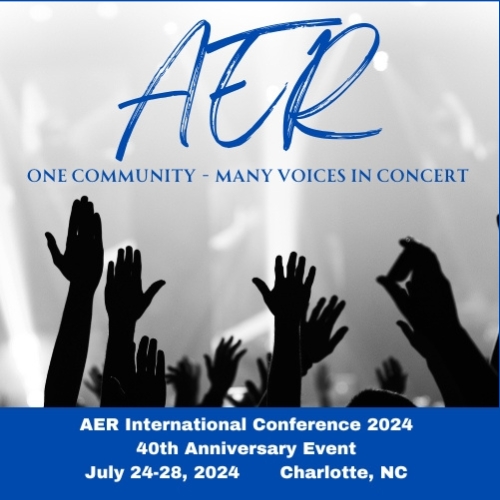The AER Accreditation program is designed for schools and agencies, referred to hereafter as organizations, that provide services to individuals who are blind or with low vision. It allows for a process under which agencies and schools are evaluated against a set of standards. This accreditation has two fundamental purposes: to validate the quality of the organization and its programs and to assist in the improvement of the organization and its programs. The accreditation process does not prescribe specific practices. It is concerned, from a qualitative standpoint, that the organization and its programs have clearly defined relevant goals and appropriate conditions under which goals can be achieved. Accreditation serves as a vehicle that allows for organizations to first examine itself via a self-study in relation to a specific set of standards and then be assessed by external reviewers. The information and materials that are received via the self-study are subjected to a strict review and evaluation to determine if accreditation can be awarded.
The AER Accreditation Program is outcomes-based. The AER accreditation distinction signals that an agency or school operates at the highest level of quality and is positioned to generate the outcomes needed by the clients.
The Accreditation Program
Accreditation is a process under which services and operations are evaluated by an external team to determine if standards that are deemed indicators of quality performance, measures of sound practices and that generate the best results are met. Accreditation is a value-added process that ensures that consumers (i.e. clients and students) are provided services under quality based conditions and operations.
The standards for accreditation are set by the AER Accreditation Council whose members include professionals who are skilled and experience with program administration, systems, educational and rehabilitation protocols, and service delivery. The Accreditation Council has chief responsibility for setting and enforcing standards set forth in the Accreditation Program. The Council acts as the overseeing body that ensures that the standards are current, relevant, and advance excellence in service delivery and that those entities seeking accreditation meet the standards. The accreditation system includes: Agencies/Schools and Colleges/Universities.
Since its inception, AER has had one primary purpose and that is to elevate the conditions that drive to excellence. Whether it is supporting professionals who deliver services or supporting professionals who provide instruction to emerging professionals, AER recognizes the role standards play in achieving short- and long-term goals. AER believes that the greatest results will be achieved by a conflated approach. Thereby in 2017, the AER Board of Directors voted to adopt an accreditation program. The program, previously managed by the National Accreditation Council Incorporated, is now under the executive management of AER. Building on its experience with the AER University Review Program, AER launched the AER Accreditation System in 2018—combining its efforts under one umbrella.
The AER Accreditation Council
The primary responsibilities of the Council include:
- Approve and or deny accreditation.
- Define standards and criteria for the evaluation of entities and programs and assure compliance with the standards.
- Develop methods for measuring the effectiveness of standards and the accreditation process.
- Establish guidelines and policies applicable to the accreditation and approval process.
- Hear and decide appeals related to the denial of full accreditation.
- Establish the re-evaluation of the standards cycle and make improvements to the standards as needed.
Click here for a full list of accredited organizations and schools for the blind
Want to know more about the AER Accreditation Program for Agencies and Schools that provide services? Handbook
DOCUMENTS:
I. Management Standards
a. Policy and Administration – PA
b. Financial Management – FM
c. Staff and Volunteers – SV
d. Building and Grounds – BG
e. Community Relations, Public Education, Fundraising – CRPEF
f. Community & Consumer Involvement – CCI
g. Program-Evaluation – PEI
II. Program Standards – All ages
a. Orientation and Mobility — OM
b. Assistive Technology – AT
c. Vision Rehabilitation – VRT
d. Vocational Rehabilitation Counseling – VRC
e. Low Vision Clinic Services – LVCS
f. Recreation Program – RP
g. Residential Facilities and Health Care — RFHC
h. Itinerant Services – IP
i. Short Term and Support Services Programs STP – SSP
j. Community Integration Services – CIS
k. Outreach Services – OS
l. Provision of Reading Materials – PRM
m. Blindness Prevention – BP
n. Industries Employment Services – IES
III. Program Standards—birth through school-age
a. Early Intervention Programs – EIP
b. Preschool Programs – PP
c. K-12 Programs – K-12
d. Supplemental Learning Curriculum – SLC
e. Multiple Disabilities Programs – MDP
f. Identification and Referral – IR
g. Assessment of Need – AN
h. Program Design – PD
Self-Study Summary – Management Standards
Self-Study Summary – Program Standards
Accreditation Program Application
Annual Update Form
Quick Facts

